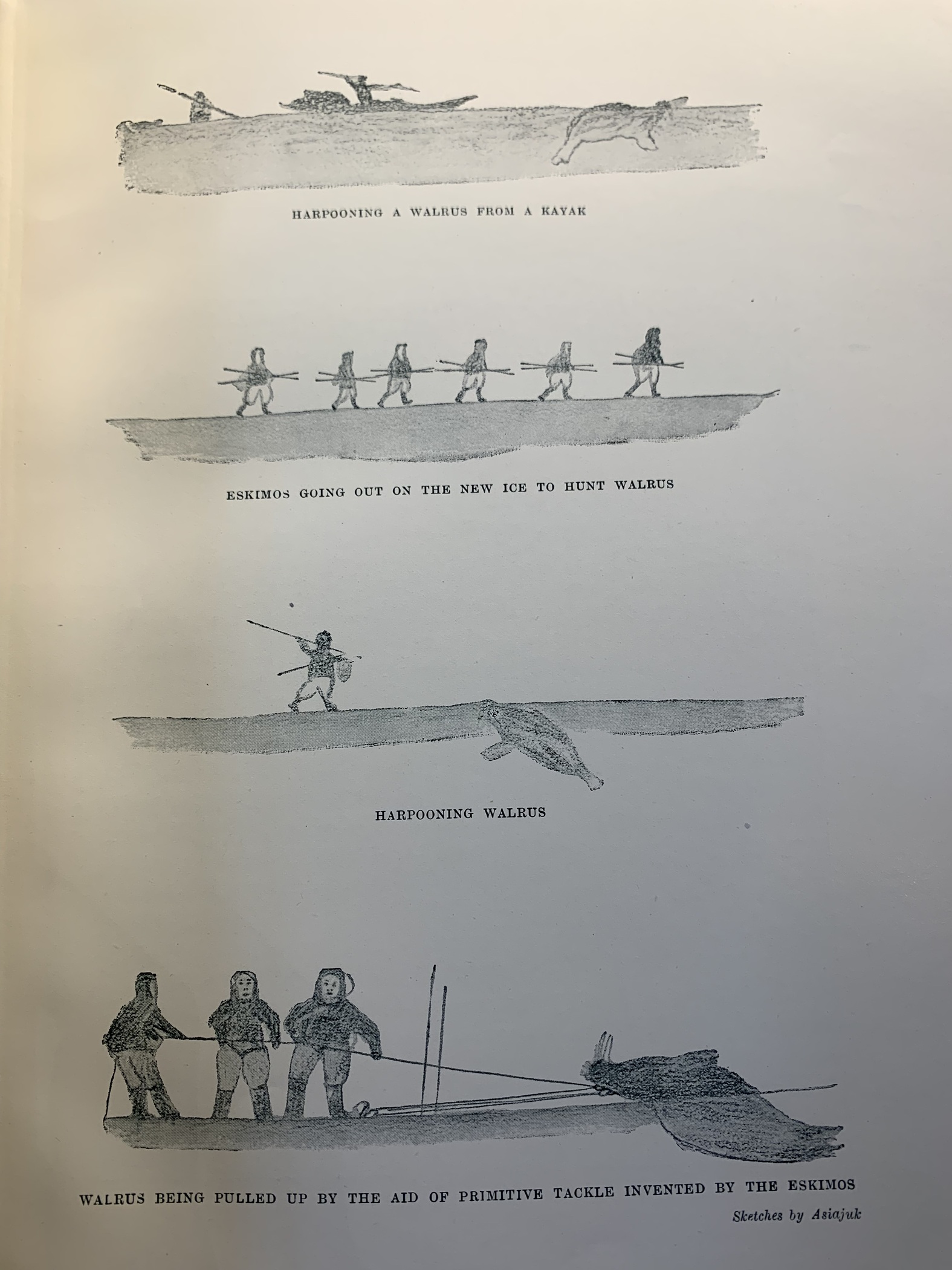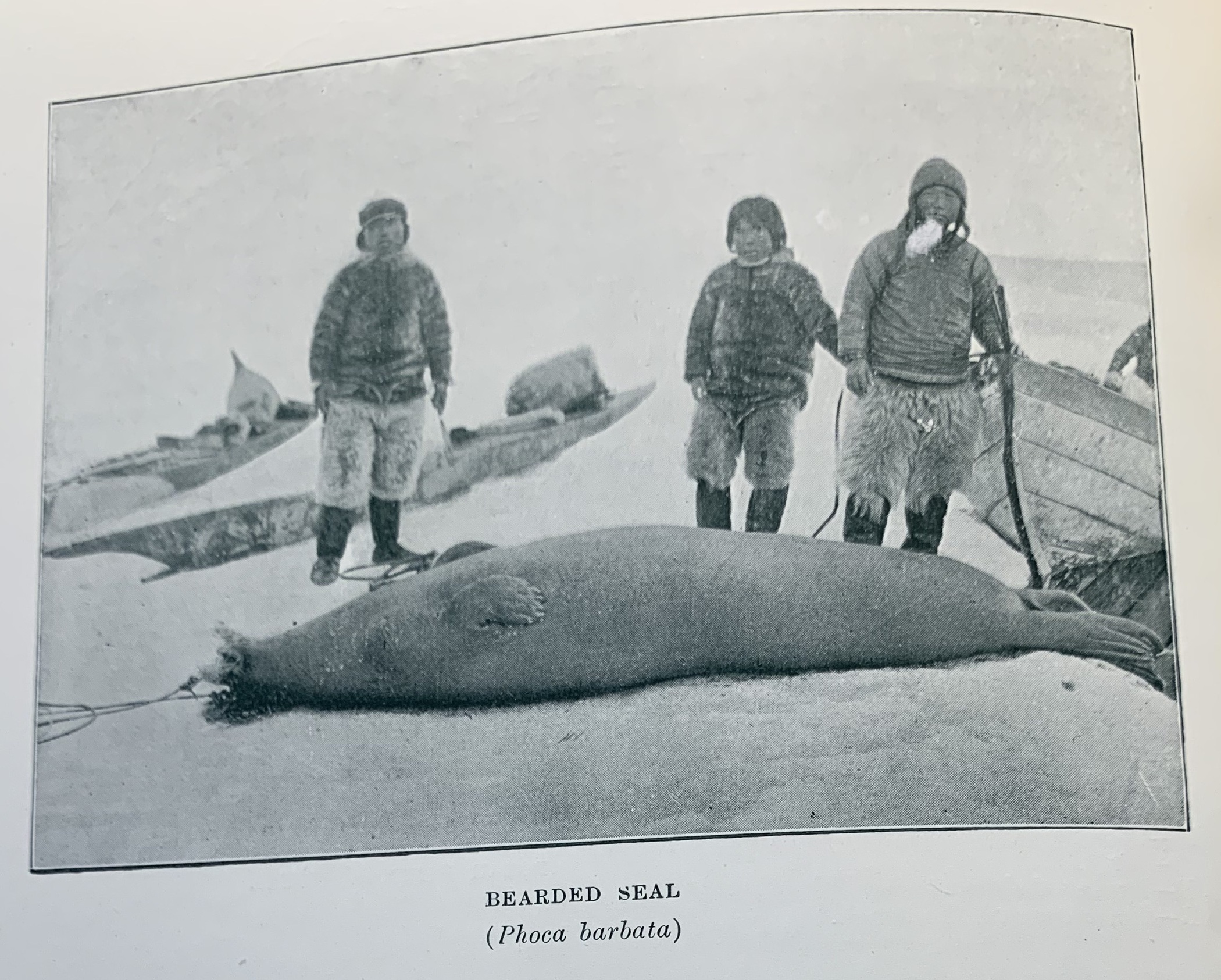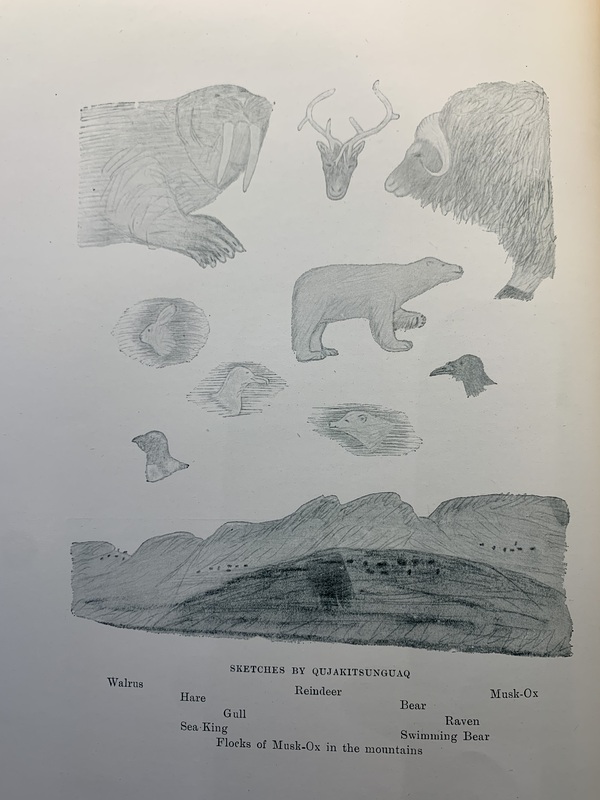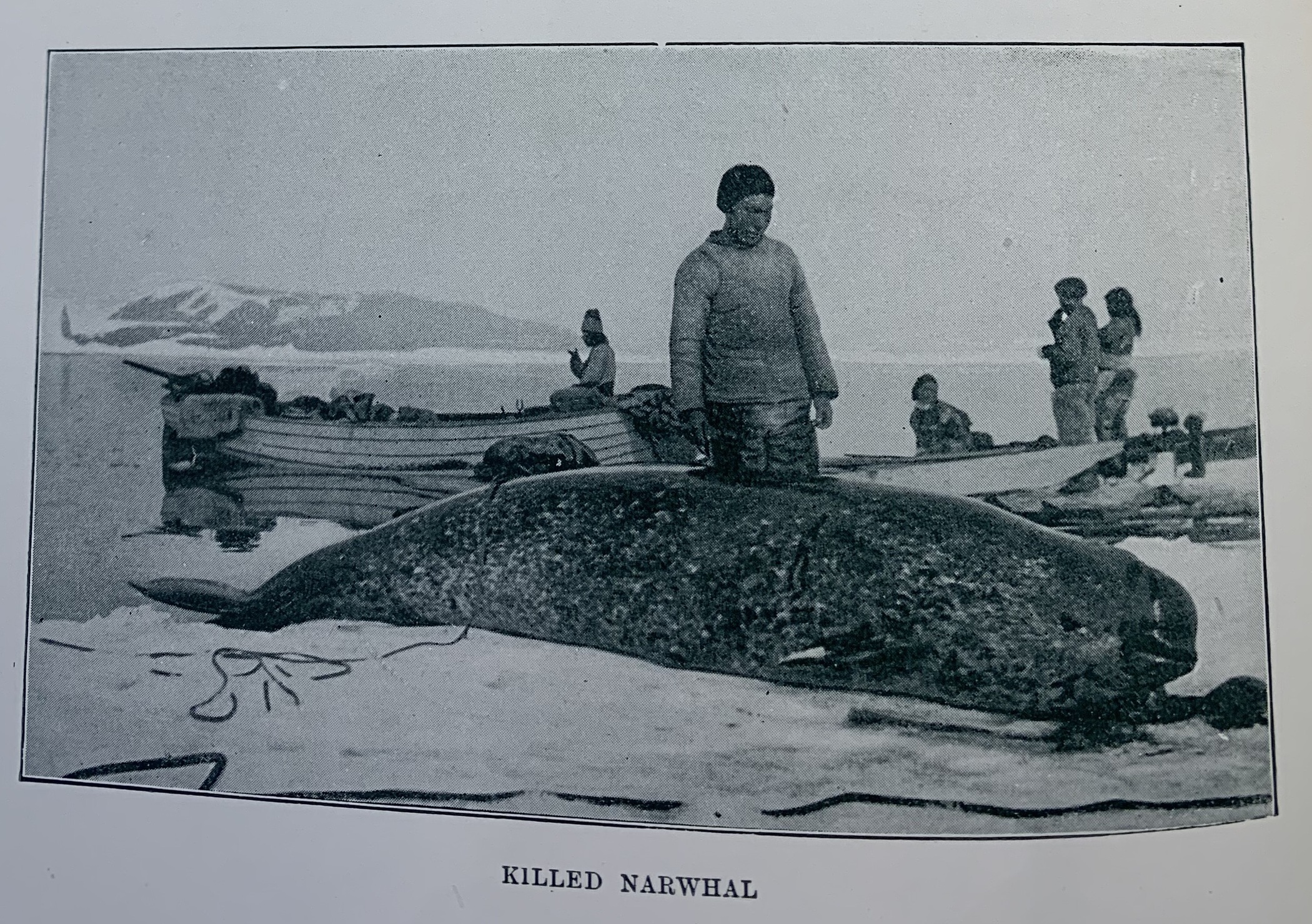Indigenous Hunting and Diet
The Fight for Food
The harsh and unpredictable conditions of the Arctic make hunting and survival difficult for the Inuit communities, forcing them into a constant fight for existence. Although they are able to store their catches during the dark period (October 1st → Feb 1st), these reserves are not infinite, and depending on the success of the year’s haul, places many in desperate positions. Therefore, they look towards a wide variety of animals, tracking them depending on their specific hunting seasons and availability.
Hunting on Land:
1) Sea-Kings:
Sea-Kings are small birds within the Auk family, and can be found along the whole coast of Cape Melville to Etah, particularly during the breeding seasons, where millions congregate. This serves to be an optimal time for hunting since they can be easily caught in ketches from hiding places. Despite their small size, they play an important role in the survival of Inuit communities—providing both meat for food, and skins for warm, comfortable underclothing.
The Cape York district in particular rely upon Sea-Kings, with it being a delicacy served to guests in the winter. During May to June, these birds are pickled whole into newly-flayed seal-skins stripped whole from the sea. As soon as the skin is filled, it is sealed with stones to prevent sunlight from reaching, and left until the bird decays, with the blubber permeating the flesh. This method of preservation is specific to the Inuit communities here, and an integral part of their culture. However, other than being a primary provider of food and resources, they also serve as a means to attract blue foxes, which are also used by the Inuit.
2) Reindeer, Musk-Ox:
Reindeer are of utmost importance to the Inuit for not only their meat but also for their skins, in particular, coats and bedding to keep them warm. Musk-Ox can be found along the stretches from Humboldt’s Glacier down to the narrow strips of land among the mountains of Cape York, during the hunting period of April to May. The expeditions to hunt these animals last for a couple of months since the Eskimos camp on the killing-grounds in order to dry and prepare the skins. It is thought that an average of 300 musk-oxen are hunted, and killed annually.
Hunting in Sea:
Fjord-Seals + Bearded-Seals:
The hunting season for seals usually occurs during October, with the key weapon here being either the harpoon or stalking-sail. The process follows:
1) The hunter ties a piece of bear-skin under his feet in order to move along the ice noiselessly, listening to the noises of the seals as they surface to breathe, only moving when they inhale.
2) Then, by taking advantage of the seal’s need to breathe, the hunter harpoons it through an orifice with great aim.
The other method to catch seals is when they are asleep on the ice:
1) The hunters are skilled enough to imitate the form and sound of a seal if the hunted one wakes up.
2) Once the seal falls back asleep, the hunter is able to strike.
Although hunting seals is essential to the survival of the Inuit communities, it is also a popular sport and hobby amongst them. Whilst the harpoon and line are traditional methods used, recently, the rifle and stalking-sail imported from the South of Greenland are growing popular due to its convenience.
The stalking sail can be identified as a cloth of white skirting fixed to a small sledge which is able to hold an individual lying on their stomach, as they push forwards towards their prey until they are within shooting distance. This method is called Ûtut-hunting, which provides foundation for the very important winter-stores.




